Bulgaria is one of the most popular tools due to its versatility. She can cut metal, stone, tile or concrete. With other discs, it is possible to smooth out the welding spots well and to give the desired shape to the metal surfaces. Special nozzles help to remove old paint and rust, and other circles polish wood or steel to an ideal condition. This wide application makes it possible to actively use this tool in almost all factories dealing with metal or wood, as well as in private needs and small workshops. To choose the right Bulgarian, you need to understand its capabilities, depending on certain parameters. The key criteria of this device and their suitability for various activities are described below. Having become acquainted with this information it will turn out to be to buy a suitable tool that will be convenient for realization of the set tasks and will last for a long time.
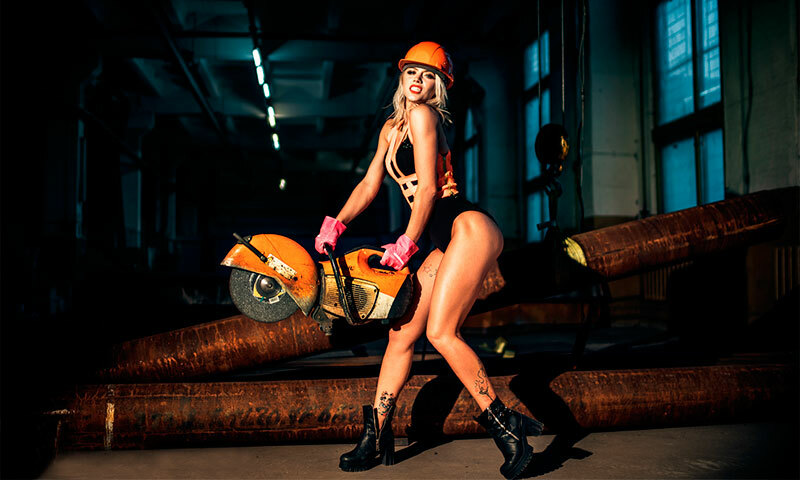
Contents:
- The best companies producing Bulgarian
- Principle of operation and the device of the Bulgarian
- Types of Bulgarians
- Options for choosing the Bulgarian
- Which Bulgarian to choose
- How much is the Bulgarian
The best producers of Bulgarians - which firm to choose
The construction market is filled with a lot of goods with cutting and stripping functions,but if you understand all the features of laziness, then you can buy the products of any company from this list:
- Bosch;
- Metabo;
- Elitech;
- Hitachi;
- Makita.
For those who want to see the real pros and cons of specific models it will be useful to read the rating of the best Bulgarians. Well, for detailed analysis of all parameters and self-selection of the model by criteria, the information below is provided.
Principle of operation and device of Bulgarian
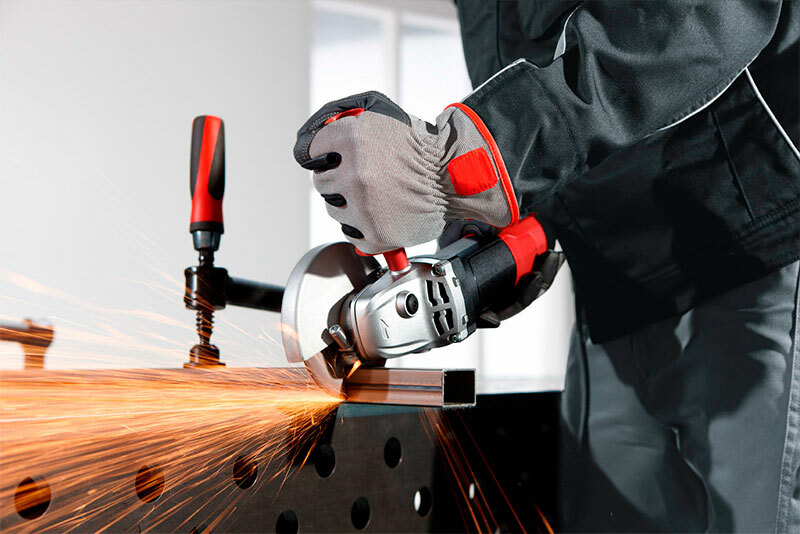
Bulgaria is a construction tool with many functions. They are also called angle grinders( USM).The main action is to rotate the disc at high speed, so that processing or cutting of various parts is possible.
With the help of changing attachments( disks), the tool is able to cut metal sheets and rods. If you install the disc on concrete, then they will be able to cut the tile and cut the stems in the wall. Wire nozzles allow you to remove rust and paint from car bodies and other parts. Flap discs grind wood and steel to a high degree of smoothness. With clean abrasive wheels, smooth the shape of the welds and make chamfers.
A wide application of this tool has found reflection in construction and repair work in the apartment, replacing plumbing, metalworking production and woodworking. Often, the sound of Bulgarian can be heard at the service station or from utility services for the repair of heating systems. Not a single private workshop can do without it.
For the maintenance of the work the designers carefully thought out the device of the Bulgarian, which consists of:
1. power unit;
2. brushes for transferring voltage;
3. central shaft with an anchor;
4. bearings;
5. two gears transmitting torque when connected in 90 degrees( reducer);
6. axes for dressing baits;
7. of the fixing nut;
8. of the protective cover;
9. of the arms and start buttons.
To use the device, wear safety glasses or a mask, protective gloves and dense clothing. The tool is taken with both hands, is brought to the place of cutting and the start button is pressed.
Rotation at high speed allows a disc consisting of a tightly glued abrasive on a cord net to cut through the hard metal structure or scrape off its top layer. In the case of work with concrete and stone, a steel circle with teeth is used.
Abrasive discs come in a variety of diameters and thickness, under the common sizes of Bulgarians, which determines the capabilities of the tool. In small circles it is easy to make cuts or cut openings of various geometries. Large discs quickly cut pipes or a sheet of metal is covered.
If necessary, it is possible to set small circles on large grinders, provided that the dimensions of the reducer allow you to reach the cutting part to the machined surface. Installation of large circles on small Bulgarians is not allowed.
Types of Bulgarians
Despite the general purpose and principle of operation, there are several main types of Bulgarians, which differ in the internal device or power source. This allows them to be used in a variety of production environments.
Network grinders
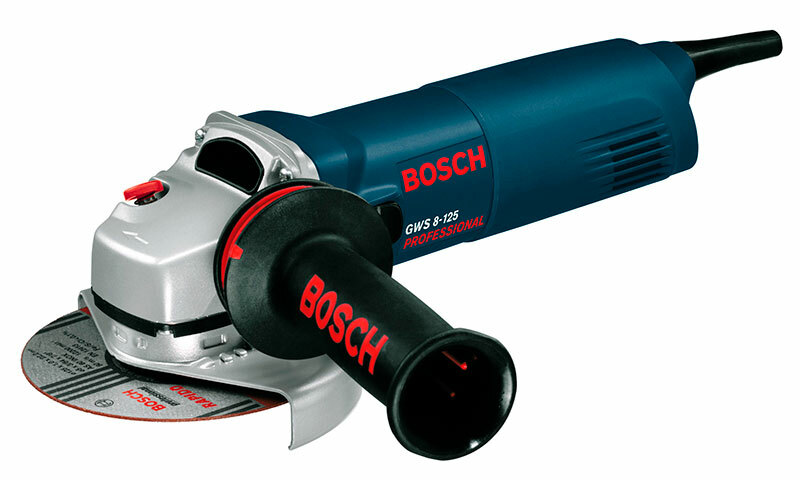
The most common type of Bulgarians working on 220 V voltage. They are most often used in factories for the manufacture of doors, gates, safes, racks, stairs and other metal structures.
There are many models for installing different disk diameters. Most suitable for working indoors or in the yard, where there is an opportunity to carry a carry. Often this type of tool is purchased for personal use in the country.
It is the network models that builders use for cutting brick, tiles, replacing plumbing, laying wiring. Depending on the power, there are household and professional Bulgarians.
Advantages:
- different body dimensions for different disk diameters;
- powerful and economical models;
- high rotation speed;
- affordable price;
- light weight;
- large number of baits;
- long service life.
Disadvantages:
- volatile;
- wire can interfere with movement in the workplace;
- with a voltage drop in the network does not work.
Batteries Bulgarians
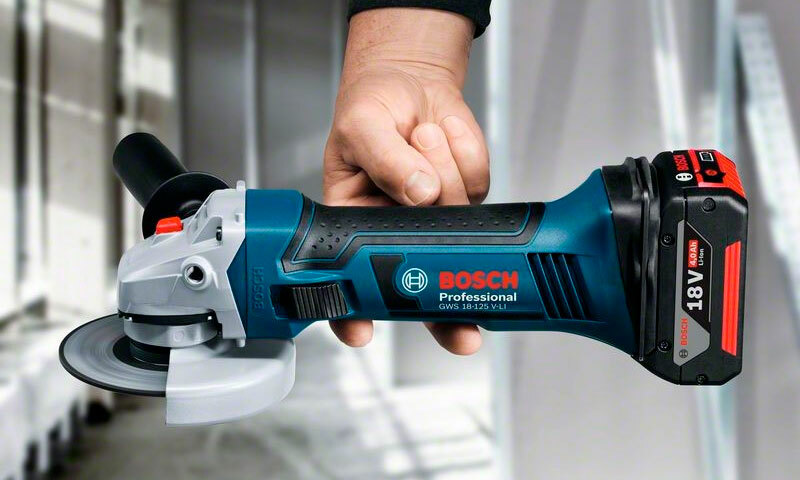
Have a similar structure with the network, but they differ in the large compartment at the end of the handle, where the battery is fastened. Most often they are produced in a small housing, which serves as the main handle for retention. They are equipped with disks of 125-150 mm.
Autonomy allows to use them remotely from a power source: emergency opening of doors, installation of fences far in the field, work in a forest cabin without electricity.
The Li-ion battery is used as the 18 V battery. But such a model will not work for the whole day and it will take a recharge, so it can only be used for short-term tasks.
Advantages:
- have a large disk rotation speed;
- compact housing design;
- most models are sold together with the case;
- light weight for easy operation;
- contain various protective functions;
- additional handle reduces vibration and helps to hold the tool more evenly.
Disadvantages:
- the operating time is limited by the battery capacity;
- some models are sold without batteries, which requires an additional purchase;
- possibility to work only with small disks;
- high commodity price.
Pneumatic grinders
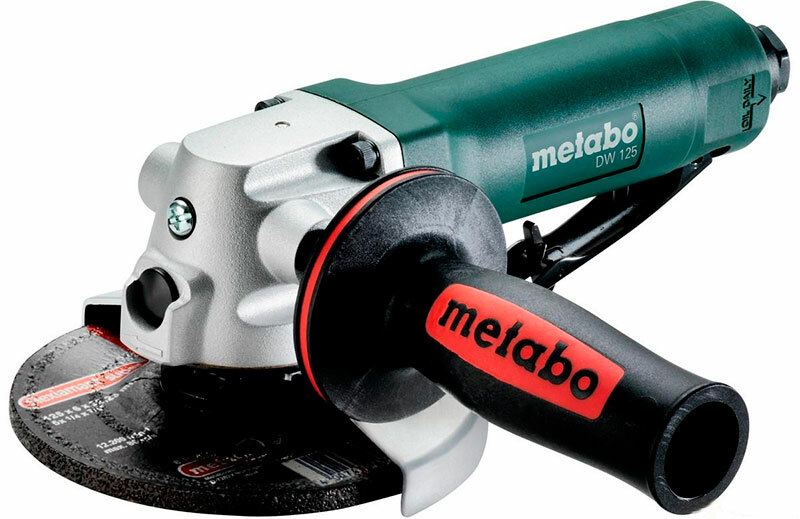
Unlike all other types, pneumatic grinders do not have a motor or motor. A high speed of rotation is created by the effect of air pressure on the blades inside the shell. They start the torsion of the axis with the disk.
To start working, a valve is used that opens the air access to the internal channel. Thanks to this design, the pneumatic bulgarian is the easiest among the cutting tools and is suitable for continuous operation throughout the day.
This kind is most used in metalworking industries, where workers have to manipulate the device in their hands for 6-8 hours. To operate the device requires the presence of additional devices( a compressor or an air network).
Pluses:
- very light weight;
- there is no overheating because there is no motor;
- can be operated continuously for 6-8 hours;
- cheap repair( replacement of bearings and valves);
- safe use in high humidity;
- high speed;
- noise is only from cutting, the work itself is silent.
Disadvantages:
- high cost;
- requires additional equipment.
Gasoline grinders
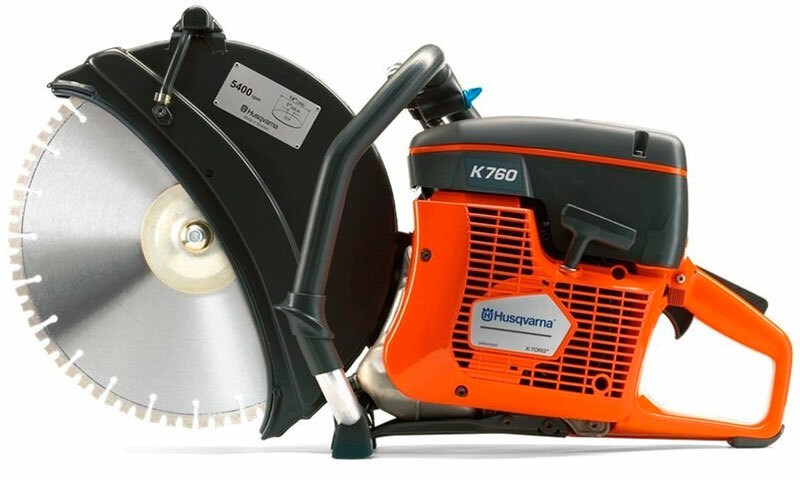
They have a large body due to the location of the internal combustion engine and the fuel tank in it. To hold the device provides a large frame-handle and an auxiliary handle. This type of tool is equipped with disks of large diameters and is used for cutting concrete or iron in conditions where there is no electricity.
Most often, the sphere of use of gasoline bulgarians is repair work on pipelines or railways. The device has increased noise due to loud sound from the engine itself, which requires hearing protection.
Advantages:
- powerful models with large circles;
- rapid cutting of large objects( pipes, profile, concrete products);
- autonomy;
- possibility to work over a long period due to refueling;
- availability of stand for use as a cutting machine.
Disadvantages:
- additional gasoline costs;
- loud work;
- interaction with only large diameter discs;
- requires breaks for cooling the motor;
- large dimensions are inconvenient for getting the tool of the cutting area in hard-to-reach places.
Bulgarian
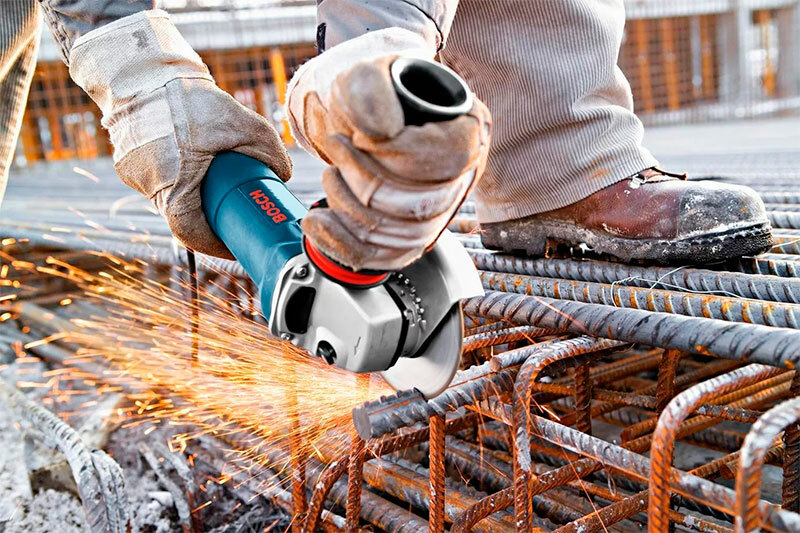
options Bulgarian is a serious tool acquired for many years and is able to significantly facilitate the performance of certain works. There are more than ten parameters for choosing this device, on which the speed of implementation and the quality of the finished product depends. Given these criteria, it will be possible to select a Bulgarian for specific tasks.
Disc diameter
For the work of the Bulgarian, a wide variety of discs with a diameter of 115 to 400 mm are sold. Small circles can be placed on large models, provided that the cutting part will reach the material to be processed. Install large disks on small devices is strictly prohibited.
When choosing a Bulgarian it is worth considering how much thickness it will have to cut:
1. If it is small repairs on the doors, making trolleys, safes, cutting holes in a sheet of metal, then a small tool with the ability to set the disc 115-150 mm.
2. To quickly cut a two-inch pipe, a 180 mm diameter disc is required, but this is suitable for a one-off cut.
3. In case of constant need to work with thick pipes, the circle will soon be erased and it will not be enough for one pass, which will require turning the part and the second cut that may be sloping the line. Here it is better to purchase the maximum size for the electric version of 230 mm and a large Bulgarian.
4. For very thick elements( rail, large diameter pipe) gasoline cutting machines with a circle diameter of 400 mm are well suited.
Power
For power options, Bulgarians are divided into household( 0.5-0.9 kW) and professional( 1-3.7 kW).The power allows faster cutting and does not stop when immersed in a dense material.
1. For a short work at the dacha, a tool with an indicator of 0.5-0.7 kW is sufficient.
2. To work in the shop with metal you need models 0,8-1,2 kW.
3. For the construction of a model with a parameter of 1.3-2.7 kW is useful.
Speed of rotation
This is a significant factor affecting performance. The higher the spindle speed, the faster it is possible to clean the surface of the rust or cut through the part.
1. In domestic conditions this indicator is unimportant and the minimum values of 6000 rpm are suitable.
2. In the production of doors and gates, models with a frequency of 7000-11000 rpm are required.
3. At the service station, where a body cleaning is often required before painting or welding, a Bulgarian with a speed of 15,000 per minute is needed.
Weight
The weight of the bulgarian creates a load on the hands and back of the operator.
1. The easiest are pneumatic types of tools, the weight of which starts from 1.2 kg. Such models should be bought when working with a Bulgarian for 4 hours every day.
2. If the device has to grind and cut for 2-3 hours, then the parameters are 3-4 kg.
3. For periodic cutting of pipes on the highway and adjusting the edges, you can buy a heavy large model for 6-9 kg, which will quickly cope with the task.
Protective functions of
The instrument with protective functions will last longer and will be safer to work with.
Among the innovations that Bulgarians can possess are the following:
1. Smooth start-up allows the engine to be slowly overclocked at high speeds and does not jerk the case when it is turned on. The function will be especially useful for beginners or people with weak physical training, operating heavy versions of Bulgarians. Still it is practical for exact guidance of a disk on a line of a cut - it is possible to occupy a convenient pose and to direct a circle on the beginning, and then, without jerk, to include the device.
2. Accidental start protection - responsible for blocking unauthorized rotation. This is achieved by a two-button trigger device, where only the drowning of both closes the contact and starts the unit. The function is useful for working in close conditions( plumbers, machine repairmen), where it is possible to accidentally contact a closely-placed tool.
3. Support for revolutions under load - allows you to keep the speed even with strong pressure. This protects the motor and prolongs its service life. This function is worth looking for those who work with solid materials of great thickness( concrete, brick, thick steel).
4. Speed control - allows you to set the speed depending on the work performed. This protects the engine and product from overheating. The function is suitable for those who often perform a variety of operations by the Bulgarian( for grinding the tree the average speed, and for polishing the metal high).
Convenience and shape of the handles
The main handle on large models is desirable with finger protection. This is convenient for work at the service stations, factories and workshops. So, cutting out the right parts, you will not hit your hand and you will not release the instrument. For small Bulgarians, it is important to expand at the end of the blocking slip from sweating hands.
The auxiliary handle must be mushroom-shaped to securely lock the device. If it can be twisted into 4 positions, it will allow changing its fixing point depending on the type of work and will increase the convenience.
Lock nut
To replace the worn disc or install another type of nozzle, it is necessary to lock with a special clamping spindle and unscrew the nut with a wrench.
1. If you change the nozzle 5-7 times, then you can do with the classic method of fixation.
2. If you often have to change the nozzles( cutting, polishing, polishing, mopping), then it is practical to buy a bolt with a quick-clamping nut SDS.It rotates around the axis without a key and the replacement drive takes place in 5 seconds.
Working with concrete
All large Bulgarians can be equipped with a steel disc with teeth, which will allow them to cut bricks and concrete. If it is necessary only periodically, then any model of the appropriate size will do. But for electricians who constantly shtrobyat walls for laying wiring, you need a model with a special protection of the winding.
A large amount of dust and small particles in the air can clog the contacts and interfere with the rotation of the anchor, so ordinary types of Bulgarians quickly fail. The tool with winding protection, on the contrary, will work long in this aggressive environment.
Tank and battery capacity
In the petrol version, the autonomous operation depends on the capacity of the fuel tank, the range of which is 0.7-1.5 liters. If there is not enough space in the working machine for additional fuel, it is practical to buy a Bulgarian with a maximum tank size of 1.5 liters. In the case of a spare canister, this parameter is not important.
Rechargeable models have a capacity of 2-4 A / h. This allows the instrument to develop high speed( up to 11,000) and effectively cope with various tasks. In order to cut the lock into the metal door of the forest house without electricity, there will be enough batteries with 2 Ah, and in a mobile visiting team for emergency opening of locks, where the forthcoming amount of work is unknown, 3-4 A / h will be required.
Air pressure and air flow rate
Pneumatic models operate at an acceptable speed due to a specific air supply, which can be from 6 to 6.5 atmospheres. When choosing such a Bulgarian it is necessary to make sure of the capabilities of the compressor or air line to provide this pressure.
The air speed plays an important role in maintaining the high speed of the cutting tool. This parameter varies from 100 to 540 liters per minute. The larger the diameter of the disc, the higher the air flow rate should be.
1. For fine fitting of nozzles and cutting the reinforcement, the speed is 100-150 l / min,
2. 200 gr / min will be required to grind the welding seams.
3. For large volumes of stripping, powerful pneumatic grinders of 350-400 l / min are needed.
Which Bulgarian to choose
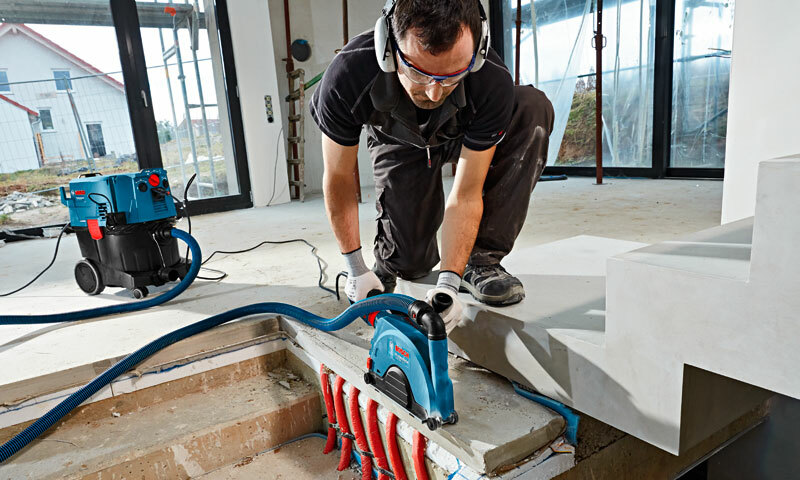
1. To perform minor repairs of metal doors and emergency opening of locks, a battery model with a capacity of 3 A / h, a capacity of 0.6 kW and a speed of 13000-15000 per minute is needed. The diameter of the discs is from 76 to 150 mm and weighs 1.5-2 kg.
2. For a classic production workshop for the production of metal structures or brigades for the elimination of leaks in heating and running water, a network bullet with a power of 1.5 kW, discs at 230 mm, revolutions of 7500 per minute and weighing 4 kg is needed. Soft start system is useful. The same model is necessary and on the construction site for the strobing of walls, but then it will need a winding protection function.
3. The pneumatic model with a mass of 1.2 kg, 150 mm discs and an air flow rate of 200 l / min will fit into the metalworking grinding plant.
4. For utilities to repair pipes or railways, a model with a gasoline engine weighing 8 kg and discs of 400 mm is required. It will be useful to have a capacity of 3.6 kW and a tank of 1.5 liters.
5. At the dacha you can buy a simple net bullet 0.7 kW with 180 mm disks and revolutions of 9,000 per minute. Weight is suitable up to 5 kg.
How much does the Bulgarian
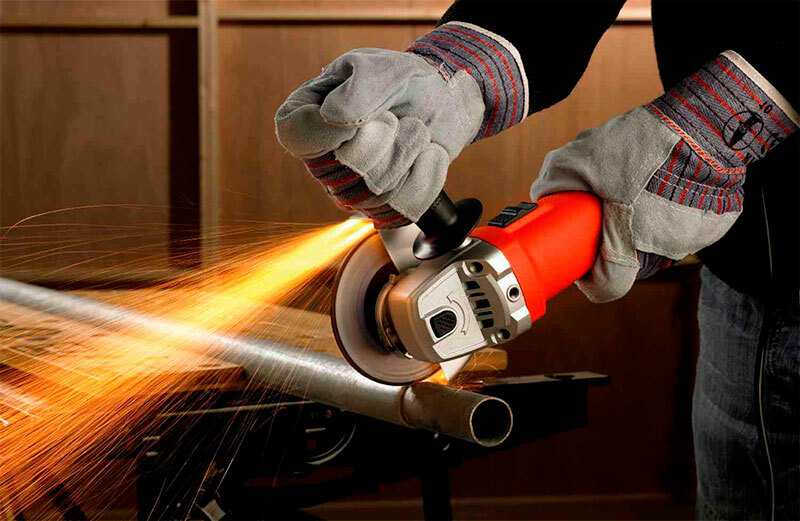
1. Bulgarian batteries for repair work will cost 8000-22000 rubles.
2. For production or construction, a network tool will cost 6,000-20,000 rubles.
3. Pneumatic models for processing metal structures are estimated at 8000-31000 rub.
4. For utility services, gasoline burgers will cost 22,000-31,000 rubles.
5. At the dacha it will be possible to buy a device for 2000-6000 rubles.



